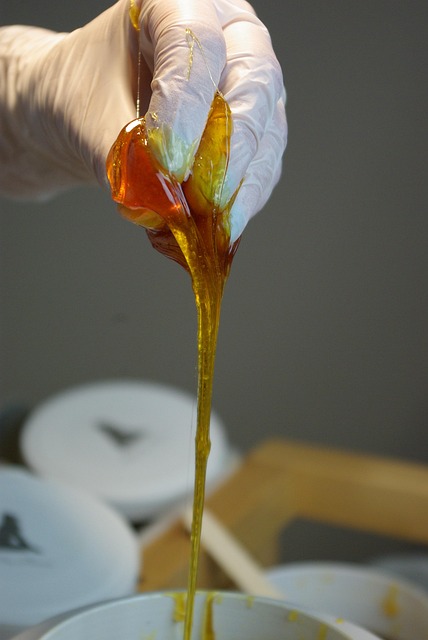This text offers a comprehensive guide to pet stain removal, emphasizing understanding causes (from urine to allergies) and tailored solutions based on surfaces. It recommends high-quality tools like vacuum cleaners and enzymatic cleaners. Key steps include quick assessment, blotting, testing cleaning solutions, and using natural ingredients like vinegar and baking soda for safe, effective removal. Proactive measures like regular vacuuming and grooming minimize stains, while professional help is advised for stubborn fabric stains.
“Unravel the secrets to efficient pet stain removal with our comprehensive guide. From understanding the diverse types and causes of common pet stains to mastering effective cleaning techniques, this article is your go-to resource. Learn about essential tools, natural solutions, and prevention strategies.
We break down a step-by-step approach to tackling various stains on different surfaces, ensuring your home stays spotless. Discover when professional help is required and equip yourself with the knowledge to keep your space stain-free.”
Understanding Pet Stains: Types and Causes

Pet stains can be more than just an inconvenience; they’re often a sign of a deeper issue, from regular wear and tear to specific health concerns. Understanding what causes them is the first step in effective stain removal. Urine and fecal stains are common, stemming from animals’ natural instincts and sometimes underlying medical conditions.
Different types of pets leave varying types of stains. Dogs, for instance, may cause muddy or grainy stains due to outdoor play, while cats can leave behind clumpy or powdery messes. Even allergies and digestive issues in pets can lead to discolored urine or feces. Proper identification of the stain type is crucial when choosing the right cleaning methods for effective stain removal.
Essential Tools and Materials for Stain Removal

When it comes to tackling pet stains, having the right tools and materials is essential for effective stain removal. Start with a good quality vacuum cleaner equipped with specialized attachments designed for cleaning upholstery, carpets, and hard floors. These can help you swiftly lift solid debris and dry matter from surfaces.
Next, invest in a range of stain-fighting solutions tailored for pet messes. Enzymatic cleaners are particularly effective at breaking down organic compounds, while oxygen-based bleach alternatives offer a safer option for different types of fabrics. Don’t forget the importance of clean, warm water and several sets of clean cloths or sponges to wipe away residues and stains.
Step-by-Step Guide to Removing Common Pet Stains

Removing common pet stains can seem daunting, but with a step-by-step guide, it becomes a manageable task. Start by assessing the type and size of the stain. For urine or fecal stains, act quickly as they can set into fabrics. Blot the area gently using a clean cloth or paper towel to absorb as much of the liquid as possible. Avoid rubbing, which can spread the stain further.
Next, rinse the stained area with cold water to dilute the stain. Apply a pet stain remover or a mixture of mild detergent and warm water directly onto the spot. Gently scrub the area using a soft-bristled brush if necessary. Rinse again with cold water until the solution is removed. For stubborn stains, repeat this process, allowing the fabric to dry between attempts. Always test any cleaning solution on a small, inconspicuous area first to ensure it doesn’t discolor or damage the fabric.
Dealing with Stains on Different Surface Types

Dealing with pet stains requires a tailored approach depending on the surface affected. For instance, stain removal techniques on carpeting involve specialized cleaners and suction methods to efficiently extract urine or fecal matter before it sets, preserving the fiber integrity. Hard surface floors like tile or hardwood demand a different strategy, often utilizing enzymatic cleaners that break down organic compounds without damaging the finish. Upholstery, fabric-based surfaces, necessitate gentle yet effective cleaners to avoid color fading or texture damage, ensuring stain removal while maintaining the item’s overall quality.
Natural and Safe Cleaning Solutions for Pet Stains

When it comes to pet stain removal, opting for natural and safe cleaning solutions is a smart choice. Not only are these methods environmentally friendly, but they also ensure that your home remains fresh and free from harsh chemicals. White vinegar and baking soda are popular and effective combinations for tackling various pet stains. Vinegar’s acidity helps break down odours, while baking soda acts as an absorbent, drawing out stains and leaving surfaces clean. Another natural cleaner is hydrogen peroxide, which can be used to pre-treat urine stains on carpets or fabrics, effectively eliminating the smell at its source.
For those who prefer a more aromatic approach, essential oils like tea tree oil or lemon extract can be added to your cleaning solutions. They not only add a pleasant scent but also possess natural antimicrobial properties, making them ideal for pet-related messes. These safe and natural methods are gentle on your pets’ fur and skin as well, making them a preferred choice for responsible pet owners.
Preventing Pet Stains from Reappearing

Keeping your pet’s stains at bay requires a multi-step approach after effective stain removal. Start by regularly cleaning pet areas with a deep vacuum to eliminate loose fur and dander, which can trap dirt and cause new stains. Use floor wax or a similar product to seal hard surfaces, making them easier to clean and less prone to staining.
Implementing preventative measures is key. Encourage your pets to stay off recently cleaned floors by redirecting their attention with treats or toys. Consider using pet-safe mats in high-traffic areas to provide a dedicated space for them to relax without leaving behind unwanted marks. Regular grooming sessions can also help, as brushing your pet regularly reduces shedding and the resulting hairballs that might land on your floors.
When to Seek Professional Help for Stain Removal

While many pet owners are capable of handling minor stain incidents at home, there comes a time when professional assistance is required for effective and safe stain removal. If the stain is particularly stubborn or located on delicate fabrics, such as upholstery or carpeting, it’s best to consult a specialist.
Professional cleaning services employ advanced techniques and eco-friendly solutions tailored for different fabric types and severity levels of stains. They understand that not all stains respond to the same treatment, so their expertise ensures that your pet’s accident doesn’t leave a lasting mark on your valuable furnishings.
